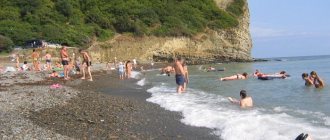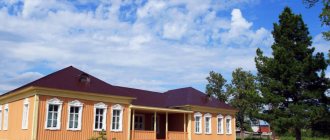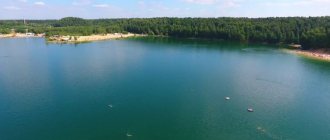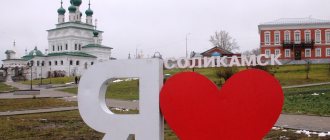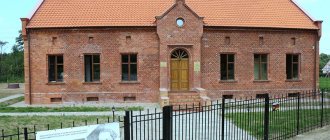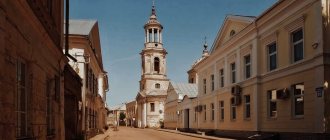In the XIII-XIV centuries, officially - in order to convert the Prussians and other pagan Baltic tribes to Christianity, in fact - for aggressive purposes, the Teutonic knights created an extensive network of defensive castles. By the beginning of the Second World War, a significant part of these once formidable fortifications, although rebuilt over many centuries, was still preserved. After the division of East Prussia in 1945 between the USSR (read: Russia and Lithuania) and Poland, the history of ancient citadels in each country took its own path. The Poles, for example, restored most of the ancient Teutonic castles they inherited, creating a popular tourist route on their basis. Poor Lithuania also found the opportunity to improve the place where the only fortification of the Teutonic Order within its modern borders was once located, and although literally horns and legs remained of it to our time - earthen ramparts and a few cellars, but even those have now been turned into a beautiful museum object. Russia, as usual, has its own special path...
On the territory of the modern Kaliningrad region there once existed at least fifty Teutonic castles. Two thirds of them more or less survived the Second World War, but today they are in satisfactory condition - so that at least part of the walls and the whole roof are in place - there are only eight of them left. There are zero museum objects among them.
One of the Teutonic castles, Labiau, is located in Polessk. Alas, it cannot boast of formidable towers, slender forburgs, or drawbridges spanning moats filled with water. From the outside, the fortification can easily be confused with some other languishing production of the Soviet era, and most tourists transiting through Polessk, I’m sure, don’t even realize that the nondescript peeling walls in the very center of the city are one of the legendary medieval citadels that once who terrified the pagan Baltic tribes...
Polessk (ex Labiau)
Polessk is located on the Deima River. Today's Deima is not exactly a river, but rather a canal dug by hand by the Teutonic Knights instead of the shallow and winding old riverbed in order to create a convenient river route between Königsberg (now Kaliningrad) and Memel (now Klaipeda).
In pre-Teutonic times, Deima was called Laba, and on its shore stood the Prussian fortification of Labguv (in other sources - Labegov). After the capture, the Teutonic knights renamed it in the German manner - Labiau. The same name was assigned to the city that grew up around the fortification in subsequent centuries.
In 1946, after inclusion into the USSR, Labiau became Polessky. It is interesting that there is no clear version about the etymology of this name: some associate it with the Soviet colonel who died in the battles for Königsberg, others claim that it all comes down to the forests surrounding the ancient Prussian city.
Even more interesting is that the modern coat of arms of Polessk - a green oak with a hand emerging from the clouds in a green sleeve above it, holding a golden hunting horn - is nothing more than the historical coat of arms of Labiau, granted to the settlement when it received city rights in 1642 and used by the Germans until the start of World War II. The oak depicted on it is generally an ancient pagan symbol of the Prussians: the sacred tree of the god Perkunas. According to legend, in the past this tree grew somewhere on the banks of the Laba and even during the time of the Teutonic Order it was considered the third holiest place in almost the entire Baltic region.
Historical continuity is great (and let those who scream about “Germanization” shut up). Another pleasant thing: in Polessk there are a number of beautifully restored historical buildings. For example, a branch of the St. Petersburg Agrarian University. This is where the good ends.
Modern Polessk is a typical illustration of today's Russian province. Under the noble architectural forms, typical everyday problems of the regions are hidden here: the emergency condition of walls and ceilings, stove heating instead of central heating, rusty water flowing from taps and electrical wiring, which in some places has not been repaired almost since the time of the Third Reich.
In the once neat courtyards there is dirt, rusty German auto industry from the end of the last millennium and some dilapidated sheds filled with useless rubbish.
Old German paving stones are sprouting hesitantly from under the battered asphalt.
And while the “fight against Germanization” flares up like a fire throughout the Kaliningrad region in the dry summer, on the Polesie pavements, as if nothing had happened, there are storm drain grates with the inscriptions “Königsberg I. Pr.” cast on them. (which literally means “Königsberg, which is in Prussia”).
Like many other cities in East Prussia, with the possible exception of Königsberg, Labiau survived the Second World War relatively well. For example, back in the late 1940s, the town hall, created by the famous German architect and professor at the Königsberg Academy of Arts, Frick Kurt, was preserved here. This is how she looked before the war (photo source: Bildarchiv Ostpreußen; author: Otto Grisard).
In the post-war years, the town hall was mercilessly dismantled, and the sculptures of medieval knights that adorned it were thrown into the swamp closest to the city. Now this has been built instead.
In the early 1920s, the Eagle Bridge was built across the Deima. You can see what it looked like before in old photographs.
The stone towers framing the drawbridge have survived unchanged to this day, however, after a “restoration” carried out several years ago, they were covered with some kind of acid-red color of cheap metal tiles, so now it’s even disgusting to photograph this bridge.
One of the well-preserved German buildings (with the exception of windows on the second floor and in the attic) is a cinema. It was opened in the spring of 1941, right before the start of the war between the Third Reich and the USSR. During Soviet times, the cinema continued to be used for its intended purpose. Now this building houses the city cultural and leisure center.
Please note: it’s 2022, and posters are still drawn by hand.
Surprisingly: there are many of them around the city, and they are all different. That is, they are not drawn using a stencil, but actually by hand. I wonder how much an artist gets for one such poster, if the payment for his labor is lower than the cost of printing the same poster on a printer?..
All the courtyards of Polessk look approximately the same and are not much different from other cities in the Kaliningrad region: gray rickety sheds with leaky roofs, some rusty pieces of iron, dirt.
Before the war, the main street of Polessk was called Königsbergstrasse. This is an ancient road that once connected Königsberg with Tilsit, and further - with Memel and the entire Baltic region. Nowadays it is called Kaliningradskaya.
On the walls of some clearly pre-war buildings you can see dates clearly dating back to the Soviet period, most often to the 1950s. These are the years of restoration or reconstruction of buildings after the war.
One of the oldest houses in Polessk that has survived to this day was built in 1772.
According to urban legend, many famous people stayed in this building: in 1799, Field Marshal Alexander Suvorov, who was returning from the Swiss campaign to St. Petersburg, and just eight years later, Napoleon Bonaparte, who was heading to Tilsit to sign a peace treaty with Alexander I. How it is it actually happened - no one knows, but it is obvious that everyone who traveled from Königsberg to Tilsit and further to Russia after 1772 passed by this house.
The Kaliningrad region, like a real exclave, lives its own life. Here, as in Crimea, you won’t find chain supermarkets or gas stations familiar to every resident of central Russia, and on the streets of local cities, like in St. Petersburg ten years ago, people still catch “bombs” with a wave of their hand.
The following photo shows a typical German transformer substation from the 1930s. There are a lot of these throughout the Kaliningrad region. In the past, these purely utilitarian buildings were painted an inconspicuous beige color and covered with red tile roofs. Nowadays, for some reason, “restorers” are closer to various nausea-inducing color combinations.
In post-Soviet times, there was a widespread legend that under each such substation there was hidden a copper plate weighing a ton, intended for grounding the transformer. This story has nothing to do with reality, however, even today there are ignoramuses trying to dig up this copper in order to turn it into non-ferrous metals.
Initially, Labiau, together with Lauken, developed as outposts of the Teutonic Order in the Baltic states for the further conquest of lands along the Memel (now the Neman). This plan was implemented by the beginning of the 15th century and both castles, which unexpectedly found themselves in the rear, were handed over to Ragnit, who also unexpectedly rose to prominence at that time.
Labiau's golden age began in 1525, when the theocratic Crusader state became the secular Duchy of Prussia. The castle became the personal possession of the Duke, and magnificent fairs began to be regularly held on its territory. In 1642, Labiau became a city. Fourteen years later, one of the most important events in the history of Prussia took place here - an agreement was signed with Sweden, recognizing the independence of the Prussian state.
In 1758 the city was taken by Russian troops. At that time, the Governor-General of East Prussia was Vasily Suvorov, the father of Field Marshal Alexander Suvorov mentioned just above, and the archives contain a record that in 1761, the forces of the Perm Regiment carried out the restoration of local dams destroyed by a storm.
In the 1930s, Labiau Castle looked like this (photo source: ; author: Alois Richard Raslag):
The fortification was not affected by the war at all. From 1948 to 1963 it housed a prison. After this, the citadel was transferred to a shipbuilding company, which from the first days of management began to engage in vandalism. To begin with, the castle lost its towers. Then all the internal premises were redesigned for production needs. In 1968, unfortunate factory engineers decided to replace the old German electrical wiring with “better” Soviet wiring, but something went wrong - a fire started. What survived it was patched up a little in the “it will do” style, after which the castle acquired a modern look.
This is what it looks like these days. Huge rubble boulders placed at the base of the square tower are the oldest part of the fortification, surviving from the 14th century.
The courtyard then (photo source: ; author: unknown).
The courtyard now.
The castle premises are occupied by tenants. For example, a funeral agency.
If you don't like the first one, here's another one.
Decadence of our time. “Why in neighboring Poland and Lithuania have all the castles been restored, and there is no end to tourists there, but here we have all this?” - the question is rhetorical. It’s obvious that you can’t develop tourism in the country with history buffs like me and a handful of fans of abandoned buildings and other decay. And if you don’t change anything, then in thirty years there will be nothing left to develop...
In the corner of the yard, among some construction debris, lies the useless figure of a headless knight. If you look through the reports of bloggers who visited Polessk before us, it will become obvious that it has been lying in this place for at least five years.
Remember just above I showed you an old photo of the city hall? So, this sculpture is from that building. It is believed that it depicts the Teutonic commander Hennig Schindekopf, who died heroically in 1370 at the Battle of Rudau (now Melnikovo). It was during his reign that the wooden fortification in Labiau began to be rebuilt in stone, and in the past the stone knight had its model in his hands.
This sculpture was completely accidentally found in one of the surrounding swamps, after which it was transferred to the local museum, near whose doors it has been lying for many years. When we were in Polessk, the museum was closed for renovations, and we were not able to visit it.
Let's take a walk around the castle.
If you suddenly follow in our footsteps, be careful: among the barns adjacent to the old walls there are dogs that seem aggressive at first glance. True, as soon as you look at them with a menacing gaze, not a trace remains of their aggression, and they hide sullenly in their booths.
They say that Polessk flourished during Soviet times. New businesses opened and the urban population grew. Even now, the number of city residents is noticeably higher than in the pre-war years.
In the 1950s, river transport actively developed in the Kaliningrad region, and Polessk was connected by regular passenger flights with Sovetsk, Gvardeysk and Kaliningrad. Now all this is in the past.
Nowadays, in the central square there is a sluggish trade in last year's potatoes and bath brooms.
Let's take a look at the city market.
The results of the “stability” of the last two decades are obvious. Pay attention to the announcement, handwritten on the cardboard:
Chest of drawers - 5000 rub. Chiffoner - 5000 rub. LG TV - 15,000 rub. Sewing machine “Seagull” - 2000 rub. Mirror on the wall 110x50 cm - 500 rub. Beam 200×100 6 m 4 pcs. — 3500 rub. Beam 100×50 5 m 7 pcs. - 1 PC. 250 rub. Beam 100×50 3 m 11 pcs. - 1 PC. 150 rub. Beam 50×50 5 m 10 pcs. - 1 PC. 250 rub. Gas cylinder 20kg - 800 rub.
Everything is for sale.
Fish pavilion.
Meat counter.
Somewhere in the central backyard, behind a multi-storey block under construction, hides an old German brewery building. Once upon a time, the best beer in all of East Prussia was brewed within these walls.
The history of brewing in East Prussia dates back to the early Middle Ages. Both the ancient Prussians and the Teutonic knights who replaced them treated this intoxicating drink with great respect. Chronicles of the 15th-16th centuries have been preserved, which describe the beer varieties that were brewed at that time in different cities of the Prussian Duchy - 51 names in total.
The brewery in Labiau was founded in 1840. At first, only dark beer was brewed here, but by the beginning of the 20th century, the range already included light varieties, liqueurs, and even lemonades. The local specialty was a type of dark beer with a strength of about forty degrees, which, they say, burned like alcohol. During World War II, his recipe was lost.
In 1946, beer brewing at the Labiau plant was resumed. The production employed 62 people - 8 Soviet citizens and 53 Germans. It is interesting to look at the salaries of that time: the director received 1300 rubles a month, his deputy and accountant - 1000 rubles each, a mechanic - 800, a supply manager - 500, brewing technologist Troiman Julius, who restored the brewing process after the war - 349, German workers - 183 rubles. In addition to beer, the company produced juices, jams and jellies from local fruits and berries.
In 1948, all Germans were fired “due to departure (read: forced deportation) to Berlin.” The brewery closed in the mid-1950s and the building has been abandoned ever since.
A few years ago, the brewery was bought by the sons of Inessa Natalich (the one who restored the old German school in Ilyichevo, turning it into an international cultural center). Now the old industrial building is gradually being restored. The local rural tourism center is located here.
An amazing family, of course—they are the only ones our country relies on.
In the 1930s, a new city school appeared on the outskirts of Labiau (photo source: Bildarchiv Ostpreußen; author: Otto Grisard).
After the war, its building was reconstructed (this, by the way, is one of the few examples of high-quality Soviet reconstruction, when the old architecture was not preserved, but the new one is also quite good). Now the Administration of Polessk is located here.
The fence that once surrounded the school yard has remained unchanged since pre-war times. Two arches too: previously only excellent students could enter the school grounds through the larger one.
The former school library building is now occupied by a doll museum. Its founder is the artist of the local theater troupe Oksana Sviderskaya.
One of the world's first portrait dolls appeared in Labiau in the 16th century. The master who created it fell out of favor with the church, and then the Duke of Prussia Albrecht of Brandenburg-Ansbach ordered a doll from him for his eight-year-old daughter Anna Sophia. The dollmaker was saved from persecution by the Inquisition, and the doll he created, with facial features similar to the young duchess, immediately became her favorite toy. A year later, the same master created one of the world's first doll houses - a toy four-story palace with a garden, mechanical fountains and even miniature silverware. Unfortunately, neither the doll nor its home have survived to this day.
The museum has several hundred different exhibits. Some of them were created by Oksana Sviderskaya herself, some were brought from different parts of the globe.
At the exit from Polessk, the old city water tower rises. It was built in 1931. The height of the tower is 31 meters.
Lighthouse in Zalivino (ex Labaginene)
Five kilometers to the north, and we are on the shores of the Curonian Lagoon. Back in the Middle Ages, there was a small fishing village called Labaginen. To the east of it, at the very mouth of the Deyma, there was another one - Peldshen, and to the west - a third, Rinderort. Nowadays they are all united into the village of Zalivino.
On a small cape jutting into the bay, where the village of Rinderort was once located, a lighthouse was built in 1868. At that time it was a simple lantern, rising upward on a special twelve-meter rod.
At the beginning of the 20th century, the lighthouse tower was built of brick. Soon a stone caretaker's house appeared next to her. Nowadays, this is one of three lighthouses from the times of the German Empire that have survived in the Kaliningrad region.
The fire on the tower burned until 1985. Then the lighthouse was abandoned.
Surprisingly, in post-Soviet times it was not dismantled into bricks. All the iron, of course, including the forged gratings, was cut off, but the lighthouse building itself was well preserved.
Currently, there is a struggle between the owners: the lighthouse belongs to the Administration of the Volga-Baltic Basin of Inland Waterways, the keeper’s house belongs to some private individual, the land is federal property. There are rumors that this is not the first year that the Kaliningrad Museum of the World Ocean has wanted to take over all this in order to open a cultural center here, but so far nothing is there.
And now the former house of the lighthouse keeper greets its few visitors with a collapsed roof and inscriptions on the walls: “Ilya the Fool” and “Petrovich the Bitch.”
A spiral reinforced concrete staircase leads to the upper platform of the lighthouse - a sure sign that at one time no savings were made on the construction of this structure. The old walls are riddled with cracks, and it is unclear how long they will last without repair.
From the top platform there is a picturesque view of the Curonian Lagoon.
Fishing nets can be seen in the distance.
Nearby is the fishing collective farm “Volunteer”.
The enterprise, which flourished in Soviet times, is now experiencing its worst years.
However, even today roach, pike perch, bream and a dozen other types of fish are caught here.
Near the collective farm pier there is a small building of a hydrological post.
Since 1947, daily observations of the state of water in the Curonian Lagoon have been carried out here. The collected samples are stored in ordinary plastic bottles from the supermarket.
The work is not easy. In winter, for example, in any weather you have to drill the ice with a hand drill.
What to do in Polesie region
The Polesie region is an ideal place for fishing, hunting, cycling, horseback riding or hiking. The area of territories for such recreation reaches 106 thousand hectares.
Cycling route
An excellent cycling route can be taken from the village of Golovkino to Matrosovo - this is a road along a breathtaking canal and endless green spaces.
Fishing
Matrosovo (until 1946 Gilge) is one of the most picturesque places in “Kaliningrad Holland”. You can stay at the local estate “Gilge” on the street. Levoberezhnaya 20. There is everything you need for relaxation - cozy rooms, fishing gear, rental of boats, speedboats, ATVs, bicycles, excursions and much more.
Boat trip
Even more exciting can be a boat trip starting at the Eagle Bridge. Almost immediately after departure you find yourself in the Polesie Canal Großer Friedrichsgraben, which is 18 km long.
The boat trip follows the following route: Eagle Bridge – Polessk Canal – Golovkino – Matrosovo – Gilge Estate – Curonian Lagoon – Polessk.
Kayaking through the “water lily paradise”
For lovers of kayaking and even beginners in this business, Polessk has many surprises in store. The rivers Zayachya, Matrosovka and the Curonian Lagoon with the stories and legends of the region, as well as its beauties, are worth the effort.
Here you can see with your own eyes beaver dwellings, a variety of waterfowl - ducks, swans, cormorants and gulls, gray heron, marsh harrier and white-tailed eagle. The most exciting thing about this walk is the carpets of yellow water lilies and white lilies.
You need to prepare for a trip to Polessk in advance by thinking about what exactly you want to do - sightseeing or active recreation.
Find out more about the excursion and leave a request:
[contact-form-7 404 “Not Found”]

